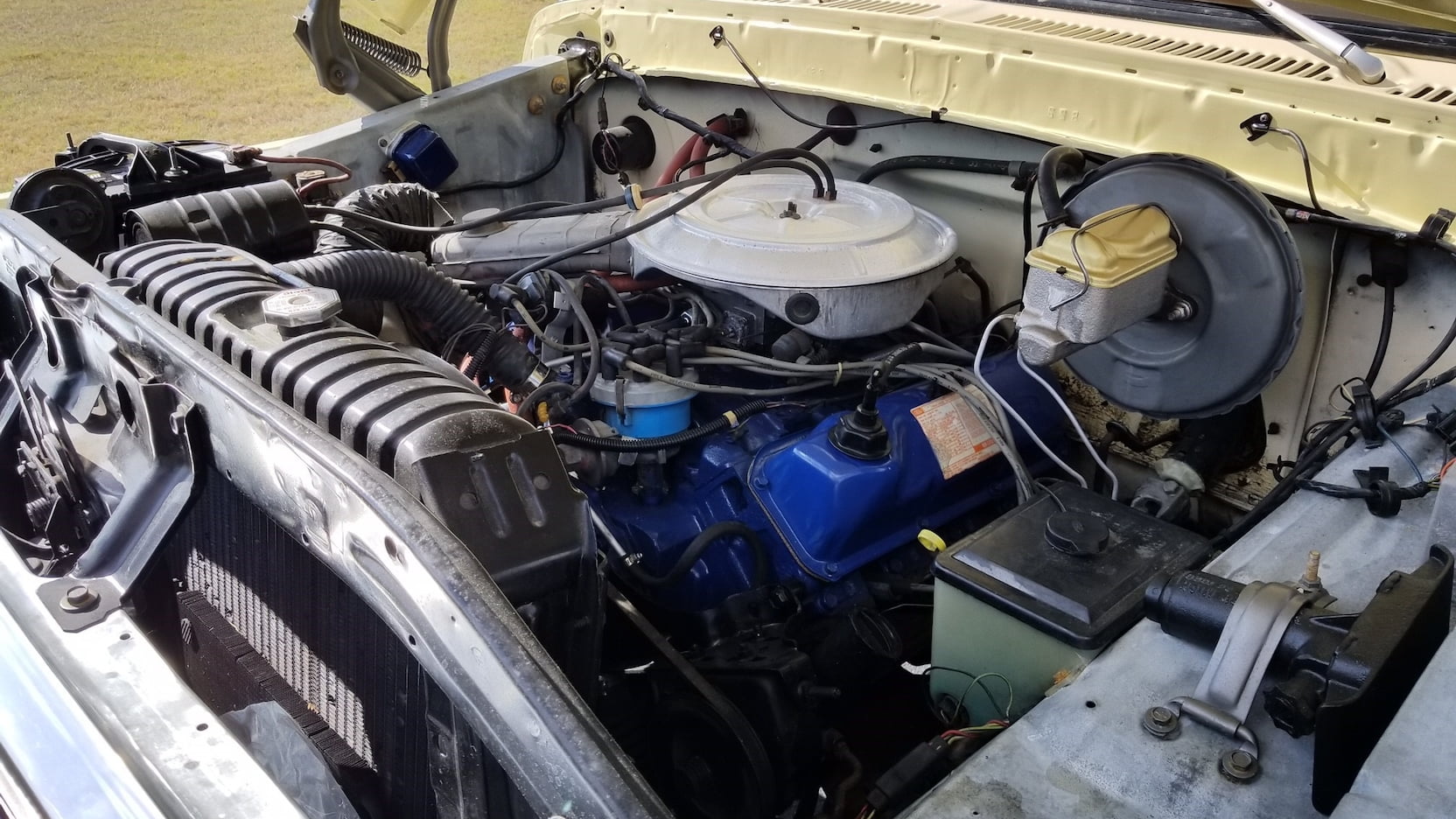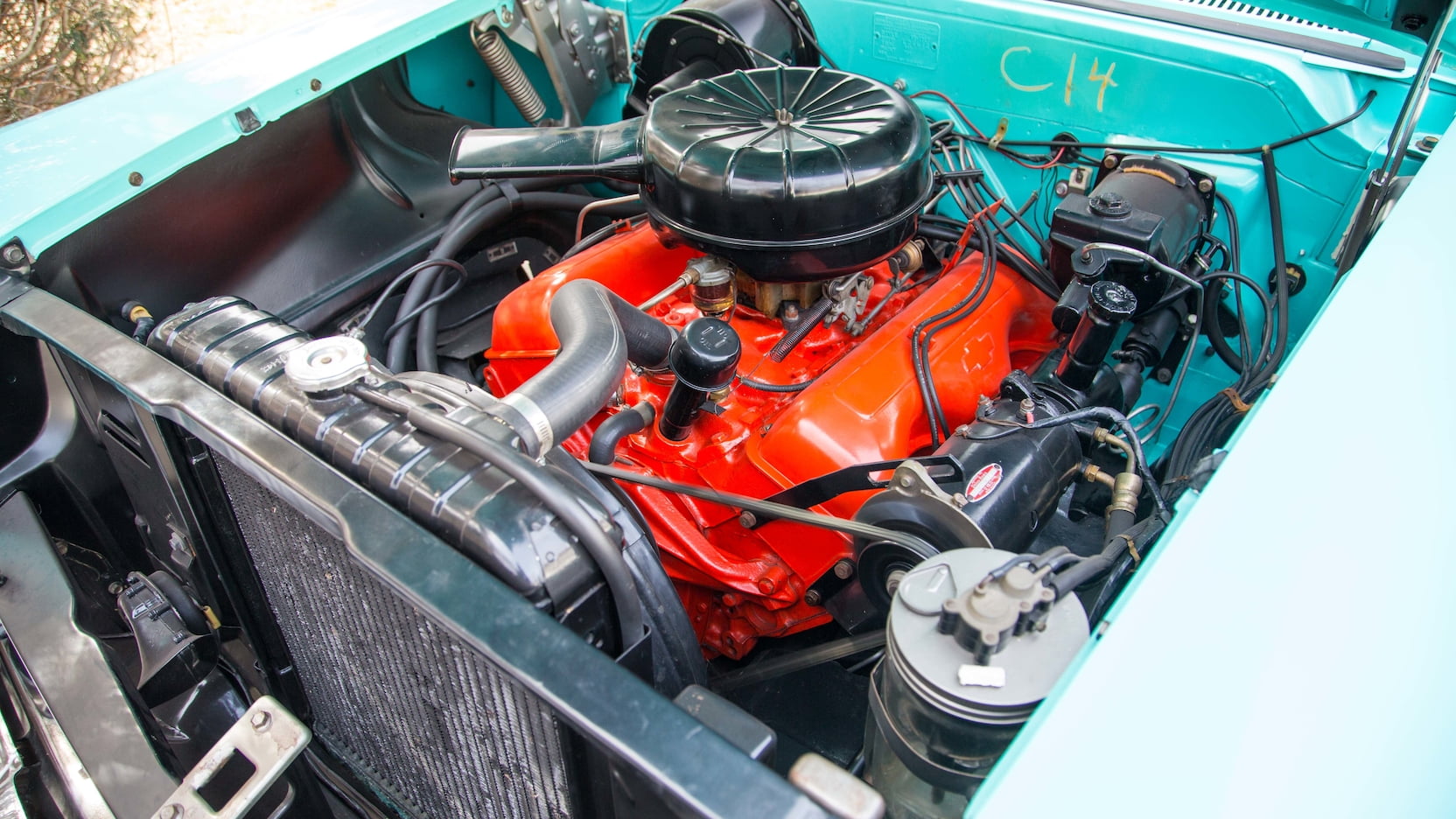Media | Articles
6 of America’s smallest big-blocks and biggest small-blocks
Engine displacement, calculated in cubic inches or liters, is merely a function of two measurements: bore area (how wide the hole for the piston) and stroke (how far the piston travels inside the engine block). An increase in either of these will result in more “room” for air and fuel to combust inside the engine, and as we know, more displacement generally results in more power.
Because it’s relatively easy for a manufacturer to alter the bore and stroke, engines with similar external dimensions can possess vastly different internal volumes.
So what’s the difference between a big-block and a small-block? Big-blocks are externally larger than their small-block brethren, with a larger bore spacing, allowing for the potential of more cubic inches inside. However, with the right bore/stroke combo, the little guys can occasionally out-gun the big dogs. Here are six examples of Detroit’s smallest big-block and biggest small-block engines.
Chrysler

350 B-Series
Marketplace
Buy and sell classics with confidence
A follow up to Chrysler’s HEMI and Poly V-8s, the B-series provided a platform for big cubes without the added cost, complexity, and size associated with hemispherical or polyspherical heads. By the end of its life cycle, low-deck wedges—so nicknamed due to their wedge-shaped combustion chambers—could be had in displacements of up to 400 cubic inches. But things started out a bit smaller when DeSoto, Plymouth, and Dodge rolled out their base 350 big-block for 1958. These mills produced as much as 305 horses with dual-quads, but the real excitement was in the labels on the air cleaners. How can you not crack a smile when “Turboflash” or “Golden Commando” are staring back at you?
360 LA-Series
Chrysler’s workhorse, akin to Ford’s 302 and Chevrolet’s 350, was the LA-series. The original design debuted in 1964 1/2 models with the 273-cu-in V-8, while the platform soldiered on right up to the Gen III HEMI taking the reins in 2003. The LA saw a number of incremental bumps in size, being punched out to 318, 340, and finally its 1971 zenith of 360 cubes. Unfortunately, the onset of the Malaise Era dropped its 245 SAE Net horsepower rating down to 185 wheezing steeds as the decade progressed. There was, however, a shining light in this small-block’s history—Dodge’s muscle truck godfather, the Li’l Red Express. In its emissions-avoiding pickup truck trim, the 360 was tuned to 255 hp and earned fastest 0–100 mph time by Car and Driver, circa 1978.
Ford

370 385-Series
A follow up to the MEL platform, Ford’s 385-series became the go-to for big body-on-frame cars and their pickup counterparts. Not to be confused with the FE engines, which Ford designated as mid-size, the then-new heavy-duty block was the basis for the workhorse 460 and semi-hemi Boss 429. The runt of the litter, however, was definitely the 370, a smaller displacement mill used exclusively in medium-duty trucks and other utilitarian applications. The diminutive 4.050-inch bore and 3.59-inch stroke resulted in a big-block at just under 400 cubic inches and approximately 160 hp, all while weighing a hefty 650 pounds—a pretty lopsided package indeed.
400 Cleveland
On the other side of the spectrum, we have Ford’s Cleveland engine family. Debuting in the 1970 model year alongside the Windsor V-8 and aging FE series, the first and most famous offering brought 351 cubes. We’ll be focusing instead on the tall-deck version of this small-block. Advertised as the 351’s 400-cu-in big brother, it was actually sandbagging its true size at 402. Sadly, it didn’t receive any of the high-performance take-offs from its smaller sibling, being stuck with the lowly open-chamber heads and restrictive two-barrel carb. Regardless, it’s a pretty impressive feat that Ford was able to stuff a 4-inch bore and stroke into such a compact package.
Chevrolet

348 W-Series
Chevrolet’s first crack at the big-block engine was its W-series, debuting in 1958. Most will remember this initial generation from the Beach Boys’ 1962 smash-hit 409 and the beastly 427-cubic-inch Z11 Impala SS, but the original “Turbo-Thrust” V-8 was substantially smaller. While only measuring an impressively-tiny 348 cubic inches, it’s over-square design lends itself to high revs, producing up to 350 hp with the “Tri-Power” carburetor setup. Other than the obvious displacement discrepancy, a sure-fire way to identify a W-series from a later Mark IV is the M-shaped valve covers. Well, that and the Beach Boys cassette left on the bench seat.
7.0-liter LS7
The General went all out when it redesigned the small-block for 1997. All-aluminum construction, coil-near-plug ignition, and sequential multi-port fuel injection made third-generation LS engines truly different animals, yet they shared the original Chevy small-block’s 4.4-inch bore spacing for a similarly compact design. Initial offerings included a 5.7-liter LS1 for Corvettes and F-bodies with smaller 5.3- and 4.8-liter variations for light-duty pickups soon after. Chevy dropped the performance bombshell with the 505-hp LS7 in 2006, bringing with it one historic number: 427. The 7.0-liter beast took the lessons learned from the C5.R racing program and incorporated them into a screaming 7000-rpm street engine. If you happen to cross paths with one of these in the wild, watch out—this mouse motor hit the gym.










